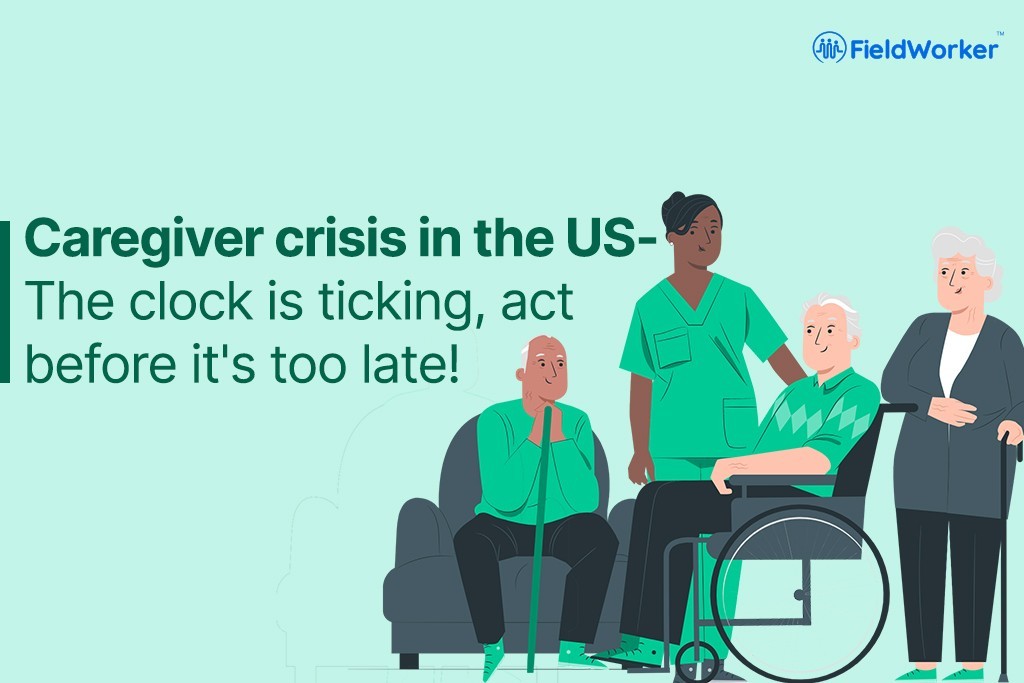The hardest decision for anyone would be choosing between a career and caring for elderly parents. Although greater salary and work security are the main reasons people leave their employment, many do so for caregiving to their aging parents at home. This situation is affecting millions of Americans today.
As people age, their cognitive and physical abilities decline, which adds to the caregiver’s responsibilities. For employed people, having a home caregiver is a smart alternative. However, it goes without saying that finding qualified caregivers with experience is challenging. Another difficulty that one may encounter is the cost of providing care.
Caregiver Challenges and the statistics:
Thus, the scenario of quitting the workplace and performing unpaid caregiving while remaining at home emerges. And typically, the ladies in the house are deemed with this responsibility. Throughout their lifetimes, women who quit the workforce to care for their loved ones may expect to lose an estimated $330,000 in salaries and benefits.
The Statista data show that 22% of respondents allocated 1 to 24% of their monthly income to caregiving tasks. Additionally, about 12% of carers stated that their care recipient’s mobility issue was their top concern in 2019. However, given that the population is aging, the number is undoubtedly higher presently.
The major challenges that caregivers encounter include:
1. Loneliness:
Someone providing companion care could feel lonely due to giving up old routines and ways of living. In their role as caregivers, they frequently feel alienated and alone, and without help from others, they assume that no one truly understands their predicament.
2. Lack of sleep:
Sleep deprivation can be a major problem. For a variety of reasons, including general worry or concern for their loved one, staying up late to complete their tasks, or coping with their loved one’s irregular sleep-wake cycle, family caregivers may experience sleep deprivation. A caregiver already under the stress of working nonstop can suffer greatly from sleep deprivation.
3. Stress, both emotional and physical:
Research has shown that caregivers have higher levels of stress, anxiety, depression, and other mental health issues than people who don’t provide companion care.
4. Loss of self-identity:
Caregivers experience decreased control over their lives. And it makes a lot of sense because they have less time for themselves, their friends, and other loved ones the more time they spend on companion care. They frequently lose sight of who they are when not providing care.
5. Lack of my time:
Since they don’t have the time or energy to do things like make healthy meals for themselves, their self-care suffers. Even as basic as a workout never finds a place in their schedule. Additionally, they are constantly physically and psychologically worn out to interact with others or spend time doing the things they like.
6. Financial issues:
A caregiver’s financial situation might be greatly impacted by helping a loved one. Family caregivers frequently skip work, leave early, or quit completely. According to AARP research, this is particularly true for women, who comprise more than 60% of all family carers. To take on unpaid caring responsibilities, carers are more likely to be female than caregivers to change their job schedules.
7. Cost of long-term care:
Long-term care is expensive — a private nursing home room will reportedly cost $9,034 a month, while a one-bedroom unit in assisted living will cost $4,500. The average monthly payment for a home health assistant is $5,148. In addition, nursing facilities house half of the elderly patients getting long-term care. According to the figures, a semi-private room cost an average of $6,844 per month in 2016, while a private room cost an average of $7,698 per month. Each year, these sums come to around $82,100 and $92,400, respectively.
Long-term care includes a wide range of services designed to meet a person’s health or personal care requirements for a short or long time. Most long-term care expenses are covered by public money, mostly from Medicaid, a joint federal-state health program for low-income people.
8. Self-reliance:
Many careers feel embarrassed or even scared to ask for assistance. They feel that seeking help might show weakness and wish to carry the entire caregiver load. They want other people to believe they are an excellent caretaker and have everything under control.
Planning and resources for caregivers:
1. The United States Medicaid Self-Directed Care program enables eligible individuals to oversee their own medical care. In some states, they can also employ family members as caretakers. Veterans have access to a flexible budget through the Veteran-Directed Home and Community-Based Services program. The federal government caregiver resources are also available on the official website.
2. The American act caregiver program aims to lessen caregiver burden, enable caregivers to continue working, and stop or delay the need for the care recipient to require higher-level care. Those dealing with a long-term caregiving situation are empowered by knowledge about the caregiving role and the supports accessible. For the preservation and advancement of unpaid family support networks, proactive outreach and availability to service help are essential.
Apart from this program, services assist caregivers in the;
- managing stress,
- depression,
- a variety of personal obligations, and
- conflicting priorities.
They also help caregivers rely less on more expensive formal support. The availability of urgent or irregular respite allows the unpaid caregiver to take a much-needed break from their duties. Special needs that pose a threat to the caregiver’s ability to provide care are addressed by limited additional services.
3. There are many such resources and help available today. Additionally, some might provide more specific perks like paid caregiver leave, flexible work schedules, and concierge services. Legal advantages can also be beneficial, particularly regarding issues like powers of attorney, special needs trusts, and living wills.
You may also use your employer-sponsored health savings, or flexible savings account for acceptable medical costs for you or your dependents.
Preparing the generation is essential:
- People need to start early conversations with their parents about financial planning for their long-term care. This can entail increasing their retirement savings to cover unforeseen costs, researching long-term care insurance, or setting up certain legal documents like a power of attorney.
- The most crucial advice we can give is to keep your job. Because you receive all these perks, financial stability affects your retirement through your job.
- Talk to the employer and HR about any support they may have access to.
Our parting thoughts:
Giving care is a physically and emotionally taxing profession. It calls for expertise, education, and compassion. It ought to receive appropriate compensation.
Never be reluctant to seek assistance. The majority of community organizations exist to serve those in need of assistance. Since many of these services are supported by taxes, contributions, or service fees, you have a right to receive them.
Remember that not everyone is aware of the requirements of caretakers. As a result, many experts are still unaware of the pressures you and your loved one are under. Hopefully, the above steps will help guide your decisions regarding caretaking.

